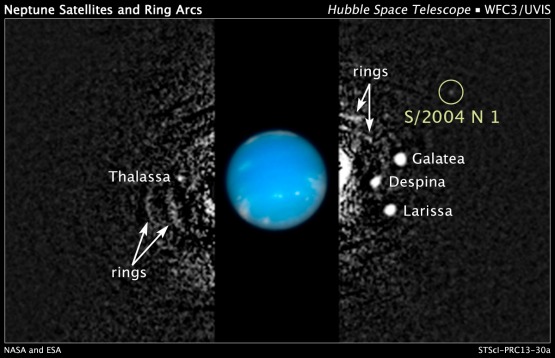New Moon for Neptune
A SETI astronomer finds a never-before-seen solar system neighbor
For all the new, exotic things astronomers discover in the universe, it’s almost more exciting to find out there was something hanging out in our own neighborhood that we never knew was there. This week, the SETI Institute announced that one of its astronomers, Mark Showalter, found a never-before-seen moon around Neptune, its 14th (circled above), noting that it was even missed by Voyager 2 when it flew by and surveyed the planet’s rings and moons in 1989. He used the Hubble Space Telescope to study the planet, then re-processed and combined 150 images in sets of eight to 10.
The news sounded a bit familiar. Air & Space interviewed Showalter earlier this summer about studying the solar system, and he told us a similar story. You can read the interview in full in our feature on the Hubble Space Telescope, part of our upcoming 2013 special collector’s edition on aerospace inventions, The Genius Factor, which arrives on newsstands this August. Here’s a snippet, in which we asked him about imaging the rings of Uranus:
“Hubble remains far and away the most powerful instrument we have for studying the families of small moons orbiting the outer planets,” Showalter says. “I find it remarkable that Mab and Cupid were too small to be noticed by the Voyager spacecraft during its 1986 flyby of Uranus, but we could see them using Hubble years later.” Showalter used the same “observing trick” on Pluto and discovered two tiny moons in 2011 and 2012.
